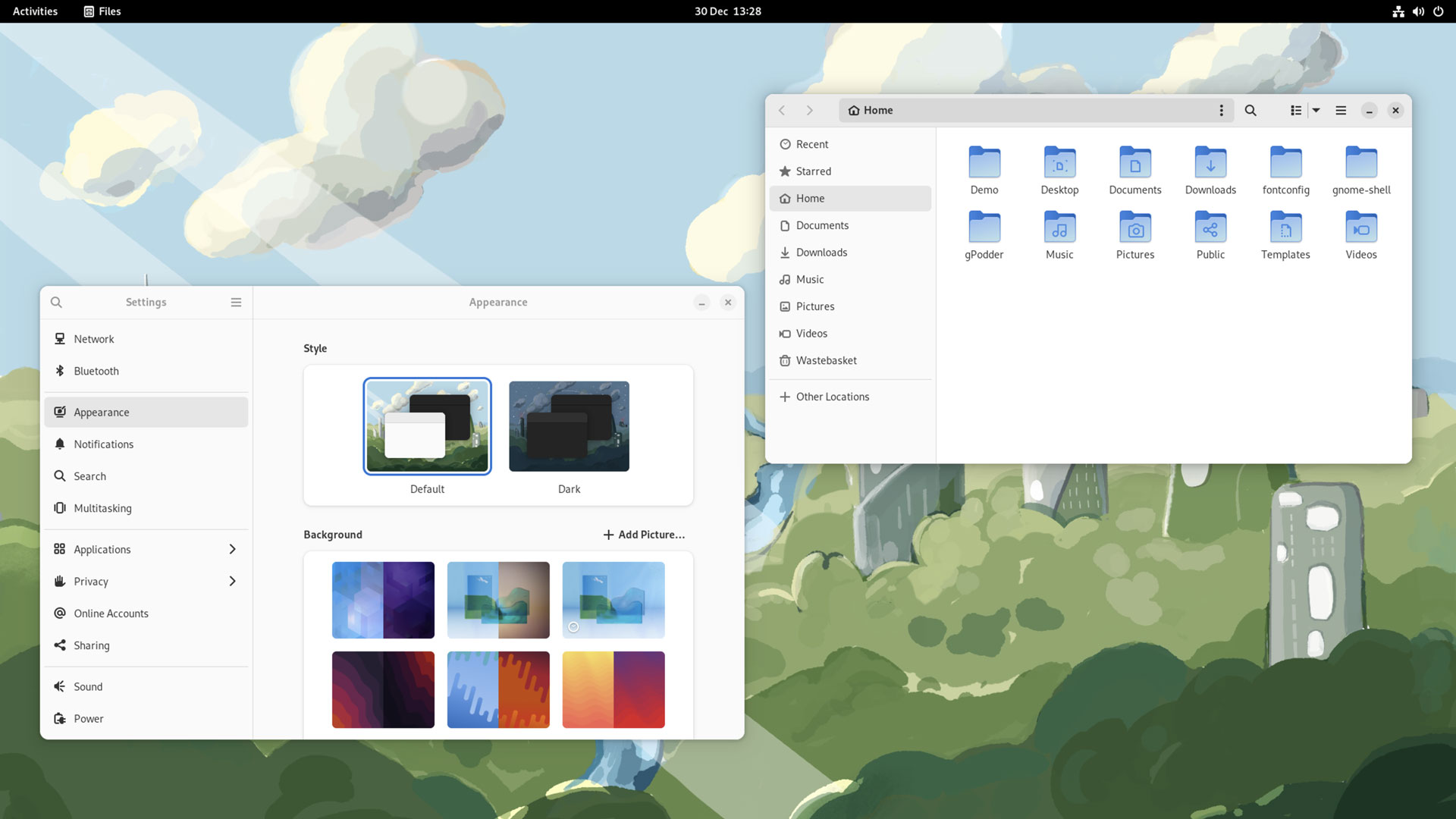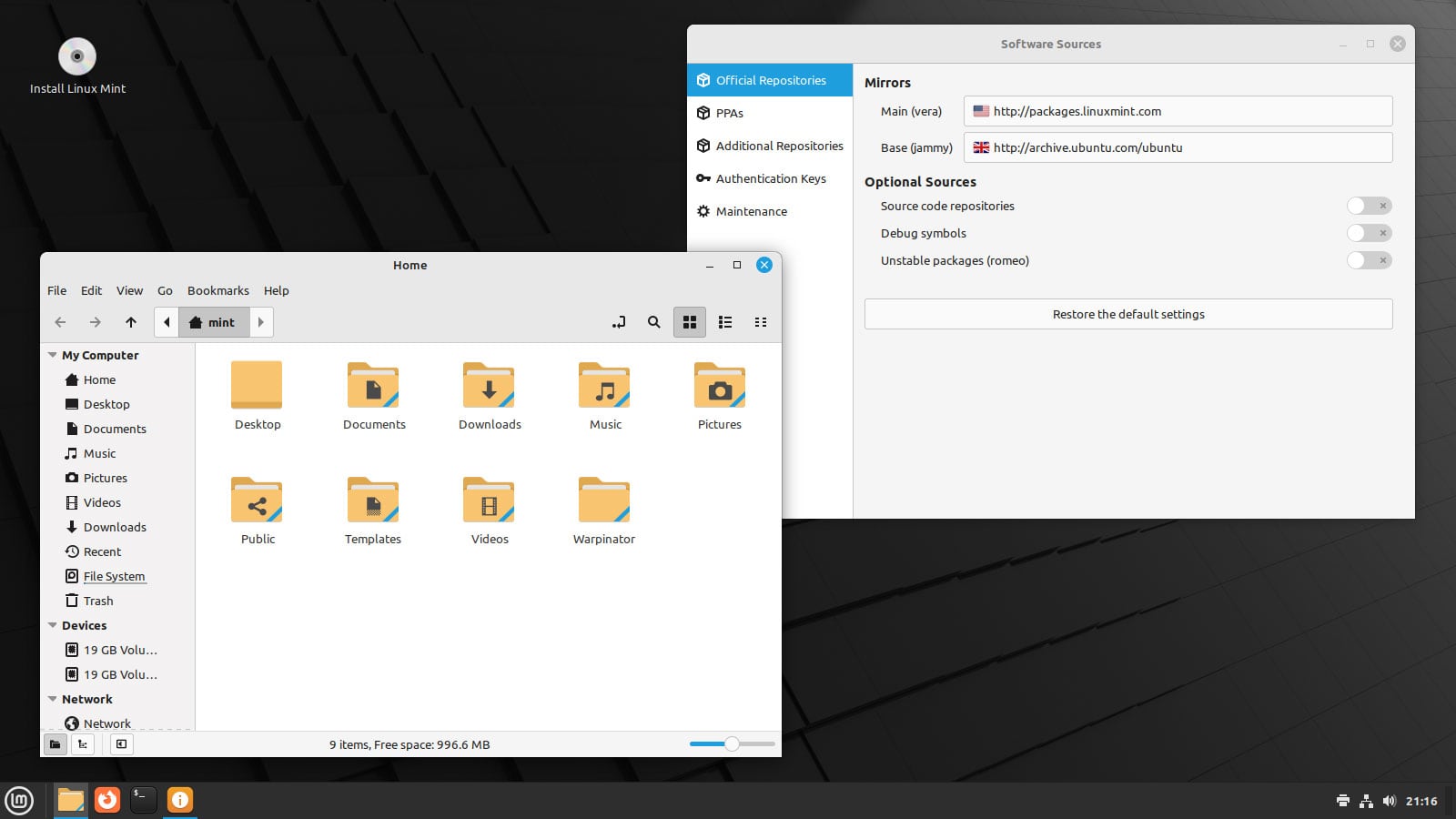In this post I look back at the best Linux distros of 2022 — and spoiler: they’re not all Ubuntu-based!
I know: I make the same joke every year I do this. But hey: I wrote about Ubuntu. I use Ubuntu. You May expect me to keep it all about Ubuntu. But the Linux ecosystem? It’s more than just Ubuntu. There are a ton of top-tier Linux distros out there deserving of praise, celebration, and recognition. This list is my small way of giving ’em that!
That said, what follows is not a position of superiority, nor a ranking of importance. It’s just me, a person, giving a shoutout to some of the year’s best Linux releases. Is it comprehensive? No. And it’s also not a criticism, so if an OS you love isn’t featured below the omission is not because I think it’s awful!
With the SEO gods (hopefully) satiated by that lengthy introduction, let’s look at my top 5 Linux distros of 2022!
1. Ubuntu 22.04 LTS
Arguably the best Linux distro release of the year for me was Ubuntu 22.04 LTS, which arrived back in April.
Long-term support releases are always a big deal as tens of millions of people use them. Thankfully, Ubuntu’s dedicated developers dished out a release worthy of attention.
Snap qualms aside (see the video) the Jammy Jellyfish bought GNOME Shell 42, configurable accent colors, Wayland by default, new multitasking options, new dock options, a better desktop icons extension, Linux kernel 5.15, Raspberry Pi 4 support. Plus reams upon reams (upon reams etc) of updated apps, tooling, and packages.
Although I am an interim release rider — always have been, probably always will be — most folks stick with an LTS release. And with Ubuntu 22.04 they get a release that’s genuinely good enough to be used for the duration of its support period, with no FOMO.
2. Fedora Workstation 37

Fedora Workstation is a flagship desktop Linux distro for good reason: it’s robust, it’s reliable, it’s impeccably produced — it distills what a lot of folks seek most: a “pure” GNOME experience, delivered as devs intend, atop a strong and stable base .
Autumn’s offer of Fedora 37 Workstation features GNOME 43 – an update that majorly improves the GNOME Shell user experience with Quick Settings. There’s also a more-featured Files rebuilt in GTK4/libwait; and revamped Calendar apps; a Device Security panels; Raspberry Pi 4 support; GRUB instead of syslinux on BIOS; and more.
Folk often overlook Fedora Workstation because, as Linux distros go, it’s rather understated, unassuming, and drama-free. Yet, it is a finessed and functional distro that forgoes fancy flourishes to focus entirely on its performance, its integration, and its cohesion.
If you’ve never tried Fedora you’re missing out, so sort it!
3. Manjaro 22.0 ‘Sikaris’

That a version of Manjaro had to feature in this list was obvious. And as Arch-based Linux distros go Manjaro is one of the best. Oh, I know: there is chatter around Manjaro within the wider Linux community but for me, those storms-in-a-tea-cup never impact on the quality (or should that be flavor ☕️) of the distro itself.
Manjaro 22.0 ‘Sikaris’ isn’t just a distro: it’s an experience
Exemplifying that is the Manjaro 22.0 release put out in December. The “main” favor with KDE Plasma serves up a flawless experience. Everything from the shell to the package manager to bespoke touches and apps are cohesive, considered, and choreographed.
Manjaro 22.0 isn’t just a distro, it’s an experience.
Manjaro’s desktop-specific “editions” are also terrifically compiled. They never feel like Manjaro plus Xfce, plus GNOME, etc. Each is a carefully curated and beautifully integrated showcase of their respective desktop’s strengths — or to put it in less flowery terms: regardless of which Manjaro edition you pick, it always feels like the MAIN one.
Plus, the Manjaro community is large and active. For any issue that arises chances are I can find a Manjaro forum post about it (or someone willing to point me in the direction of a solution). Community is an important aspect of any distro. The Linux kernel is the heart of most distros but its community that is the lifeblood.
Manjaro is the full package, and a definite distro of the year.
4. Linux Mint 21

Linux Mint 21.1 is the newer and more visually interesting (cf. new applets and updated artwork) update, the original Linux Mint 21 release made the biggest impact this year, of the two.
The oft-promoted “newbie” distro, Linux Mint’s core aims of offering a light and familiar computing experience that stays out of the way continues to resonate with users in tune with the Windows way of working.
Linux Mint 21 “Cinnamon” is lightweight and efficient, making it a good choice on lower end hardware and older machines. As well as being easy to use, Linux Mint ships with an interesting selection of pre-installed software that aims to cover most users’ needs, including some homegrown apps that are rather special.
Overall, Linux Mint 21 is the perfect choice for users wanting a reliable and easy-to-use operating system.
5. Ubuntu 22.10
Ubuntu twice in one list?! It’s a bit much, but the inclusion of PipeWire means I’m obliged to include 22.10. Honestly, it’s in my contract as editor of this site —What? Yes, I wrote the contract myself… Why’d you ask?
But seriously, Ubuntu 22.10’s aforementioned addition of PipeWire (though overdue) means most Bluetooth audio devices now “just work” with Ubuntu. That coupled with the audio device switcher in GNOME’s Quick Settings means Ubuntu 22.10 hits the right note with modern audio equipment.
Secondly, the uplift in shipping GNOME 43 and a litany of libadwaita ports meant the Kinetic Kudu arrived on the scene with a real dynamism — it was one of the earliest ways to try GNOME 43, for context — that has been missing since the early Unity days.
Lastly, and without a doubt the most important, critical, and distro-defining element was the Kinetic Kudu mascot wallpaper – the best default Ubuntu wallpaper since the Hardy Heronimo.
Honorable Mentions

Limiting my selection to 5 was necessary otherwise this would’ve just been a very long list of every Linux distro that put out an update over the past 12 months.
A few extra shoutouts: the recent EndeavorOS ‘Cassini’ release makes the ideal hop-on point for anyone wanting to ride a reliable rolling-release distro. The latest Zorin OS is based on an older Ubuntu base but the out-of-the-box wow-factor remains invigorating for users new to Linux.
Gamers, programmers, and creators adore it Pop!_OS 22.04, which is the final version of System76’s distro to ship with GNOME Shell by default; and there’s been a lot of love around the lightweight Linux distro MX Linux which injects new life into older hardware.
And a shout out has to go to SteamOSthe Arch-based distro Valve preload on the Steamdeck console.
Over to You
So that’s it my list of best desktop Linux releases for 2022. I tried to weigh up the various feature sets, changes, and key technologies when selecting them, and keep in mind the appeal and popularity. Phew, MX Linux came *so* close to taking a spot — expect to hear more about that and other distros over on our sister site omg! linux.
Anyway, who the fudge cares what I think?!
I want to hear your distro releases pick from the past twelve months. So dive down in the comments (and tip: the “old” Disqus theme is available to select from the options again, yay). Try to keep things positive where possible by focusing on the distros and developments you do like rather than the ones you don’t.